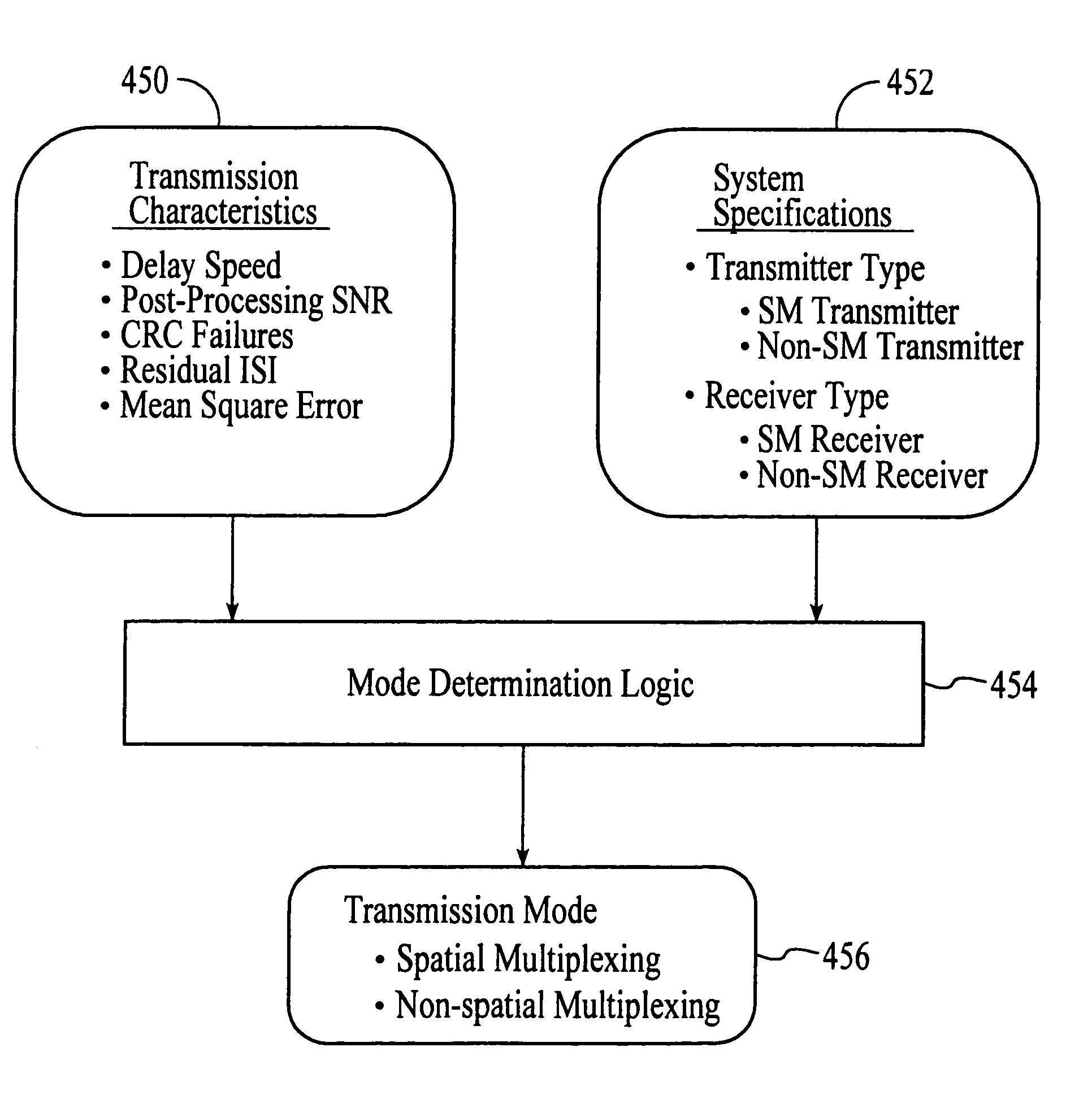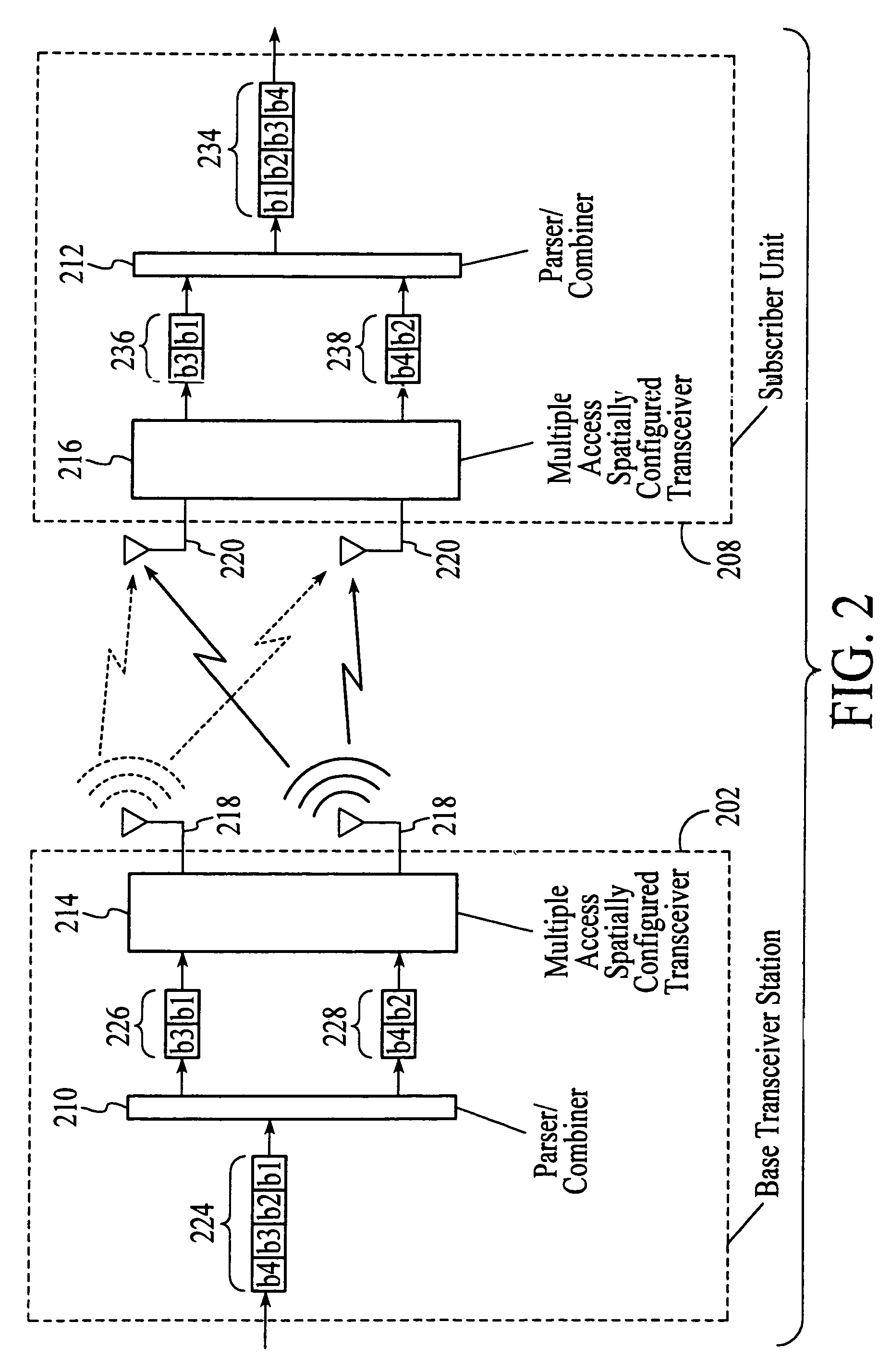Wireless communications system that supports multiple modes of operation
a wireless communication system and multiple mode technology, applied in the field of wireless communications systems, can solve the problems of not all base transceiver stations and subscriber units support spatial multiplexing, subject to channel degradation, and not all base transceiver stations and subscriber units can utilize spatial multiplexing for every transmission,
- Summary
- Abstract
- Description
- Claims
- Application Information
AI Technical Summary
Benefits of technology
Problems solved by technology
Method used
Image
Examples
Embodiment Construction
[0036]As shown in the figures for purposes of illustration, the invention is embodied in a system and method for wireless communications that adapts its mode of operation between spatial multiplexing and non-spatial multiplexing in response to transmission-specific variables. By adapting the mode of operation in response to transmission-specific variables, the use of spatial multiplexing can be discontinued in unfavorable conditions. Additionally, because the wireless communications system can adapt its mode of operation between spatial multiplexing and non-spatial multiplexing, the communications system is compatible with both subscriber units that support spatial multiplexing and subscriber units that do not support spatial multiplexing.
[0037]FIG. 1 depicts a multiple access wireless communications system that includes base transceiver stations (BTSs) 102 and 104 and subscriber units (SUs) 106, 108, and 110. The base transceiver stations include spatially separated antennas 114 an...
PUM
 Login to View More
Login to View More Abstract
Description
Claims
Application Information
 Login to View More
Login to View More - R&D
- Intellectual Property
- Life Sciences
- Materials
- Tech Scout
- Unparalleled Data Quality
- Higher Quality Content
- 60% Fewer Hallucinations
Browse by: Latest US Patents, China's latest patents, Technical Efficacy Thesaurus, Application Domain, Technology Topic, Popular Technical Reports.
© 2025 PatSnap. All rights reserved.Legal|Privacy policy|Modern Slavery Act Transparency Statement|Sitemap|About US| Contact US: help@patsnap.com



